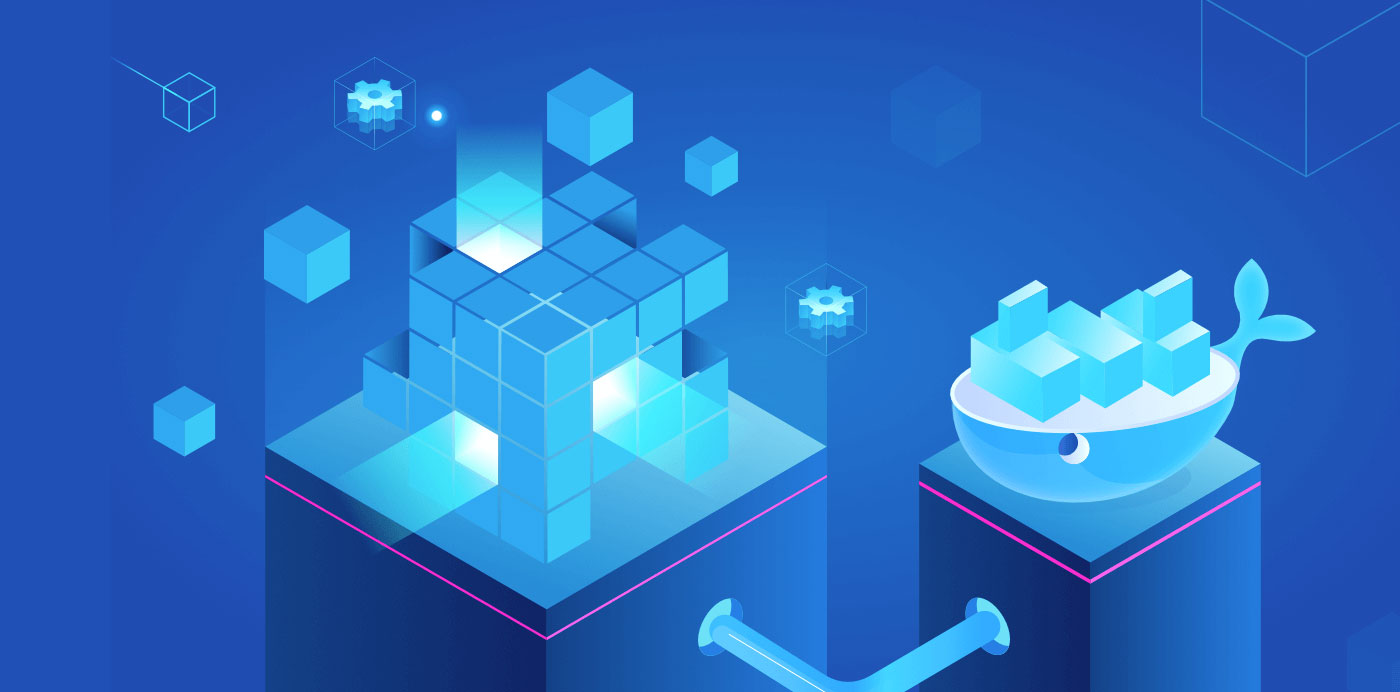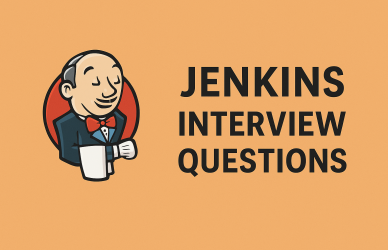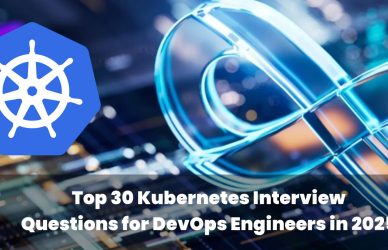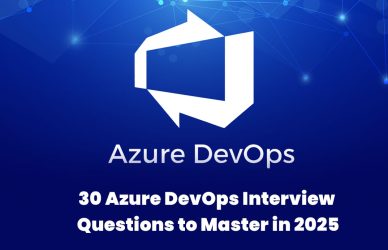Introduction: Why Docker Is Still a Core DevOps Skill in 2025
Even with the rise of Kubernetes and other orchestration platforms, Docker remains a cornerstone of DevOps, cloud-native development, and CI/CD pipelines.
Whether you’re aiming for roles in Cloud Engineering, DevOps, or Site Reliability Engineering (SRE), having strong Docker skills can give you the edge in interviews and on the job.
This guide includes:
- 30 essential Docker interview questions
- Clear, concise answers
- Real commands and use cases
- Downloadable Dockerfile template
Section 1: Docker Fundamentals
1. What is Docker?
Docker is a platform that enables you to build, ship, and run applications inside containers—lightweight, portable packages of software that include code, runtime, libraries, and dependencies.
2. Docker Images vs. Containers
- Image: Read-only template used to create containers (snapshot)
- Container: A live, running instance of an image with its own filesystem and process
3. How do you build a Docker image?
bashCopyEditdocker build -t my-app .
-t my-app: Tag the image.: Use Dockerfile in the current directory
4. What is a Dockerfile?
A text file with instructions used to build Docker images. Common commands:
dockerfileCopyEditFROM, RUN, COPY, CMD, EXPOSE
5. How do you run a container?
bashCopyEditdocker run -d -p 8080:80 my-app
-d: Detached mode-p: Port mapping
Section 2: Docker Architecture and Lifecycle
6. Key components of Docker architecture:
- Docker Engine
- Docker Daemon (
dockerd) - Docker CLI
- Docker Hub/Registry
- Dockerfile
7. CMD vs. ENTRYPOINT
- CMD: Sets default command (overridable)
- ENTRYPOINT: Sets fixed command
Best practice: Use both together.
8. How to list running containers?
bashCopyEditdocker ps # Running only
docker ps -a # All, including stopped
9. How to stop and remove a container?
bashCopyEditdocker stop <container_id>
docker rm <container_id>
10. How to delete a Docker image?
bashCopyEditdocker rmi <image_name>
Section 3: Docker Compose & Multi-Container Setups
11. What is Docker Compose?
Tool for defining and running multi-container apps using docker-compose.yml.
12. How to start containers with Compose?
bashCopyEditdocker-compose up -d
docker-compose down # To stop and clean up
13. What is depends_on in Compose?
Controls startup order of services.
Note: It does not wait for readiness—use health checks for reliability.
14. Linking services in Compose
yamlCopyEditweb:
image: nginx
depends_on:
- app
app:
image: my-app
web can access app via http://app:port
15. Passing environment variables
yamlCopyEditenvironment:
- NODE_ENV=production
- DB_HOST=mysql
Or use .env file with env_file.
Section 4: Networking, Volumes, and Optimization
16. What are Docker volumes?
Persistent storage outside containers:
bashCopyEditdocker volume create my-volume
docker run -v my-volume:/data my-app
17. Docker networking types:
- bridge (default)
- host
- overlay (Swarm)
Each container has its own virtual IP and DNS support.
18. COPY vs. ADD in Dockerfile
- COPY: Basic file copy
- ADD: Adds features (e.g., fetch URLs, auto-extract
.tar)
Prefer COPY for clarity.
19. How to optimize Docker images:
- Use multi-stage builds
- Use slim base images (e.g., alpine)
- Combine RUN commands
- Clear caches (e.g.,
apt-get clean)
20. Inspecting Docker images
bashCopyEditdocker inspect <image>
Returns JSON metadata (labels, env vars, ports, etc.)
Section 5: Advanced Docker Usage & Security
21. How to update a container?
bashCopyEditdocker build -t my-app:v2 .
docker stop my-container
docker rm my-container
docker run -d --name my-container my-app:v2
Rebuild and redeploy is the best practice.
22. What is Docker Swarm?
Docker’s native clustering tool for managing container orchestration, scaling, and discovery.
23. Scanning Docker images for vulnerabilities:
docker scanor Docker Scout- External tools: Trivy, Snyk, Clair
24. How to secure Docker containers:
- Run as non-root users
- Use read-only root filesystem
- Enforce AppArmor / SELinux
- Use Docker Bench for Security
25. What are Docker labels?
Metadata for containers/images:
dockerfileCopyEditLABEL maintainer="dev@company.com"
Useful for monitoring, CI/CD tagging, automation.
Section 6: Troubleshooting & Real-World Scenarios
26. Debugging failed containers:
bashCopyEditdocker logs <container>
docker exec -it <container> bash
docker inspect <container>
27. Clean up unused resources:
bashCopyEditdocker system prune -a
Removes stopped containers, unused images, and networks.
28. Tagging & pushing to Docker Hub:
bashCopyEditdocker tag my-app username/my-app:v1
docker push username/my-app:v1
29. Persisting logs in Docker:
- Bind-mount
/var/logs - Use logging drivers: json-file, syslog, fluentd
- Integrate with ELK, Splunk, or CloudWatch
30. Best practices for production Docker:
- Use Kubernetes or Swarm for orchestration
- Automate with CI/CD
- Monitor via Prometheus + Grafana
- Enforce security policies and RBAC
Downloadable Dockerfile Template
dockerfileCopyEditFROM node:18-alpine
WORKDIR /app
COPY package*.json ./
RUN npm install
COPY . .
EXPOSE 3000
CMD ["node", "index.js"]
Download this example at:
www.clouddevopsjobs.com/resources
Find Docker-Powered Jobs on CloudDevOpsJobs.com
Explore top roles like:
- Docker DevOps Engineer
- Cloud Engineer (Docker + Kubernetes)
- SRE with Container Expertise
- Infrastructure Automation Specialist
Browse openings or set alerts at
www.clouddevopsjobs.com
Final Thoughts
If you’re preparing for a Docker or DevOps interview, mastering these questions will put you ahead of the competition.
Practice hands-on, document your learning, and stay involved in the Docker community.
Share this guide with others preparing for interviews using the tag #DockerInterview2025.







